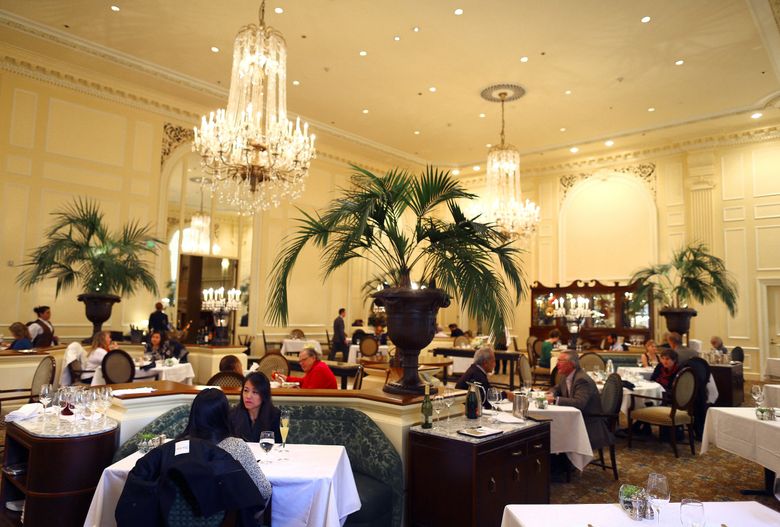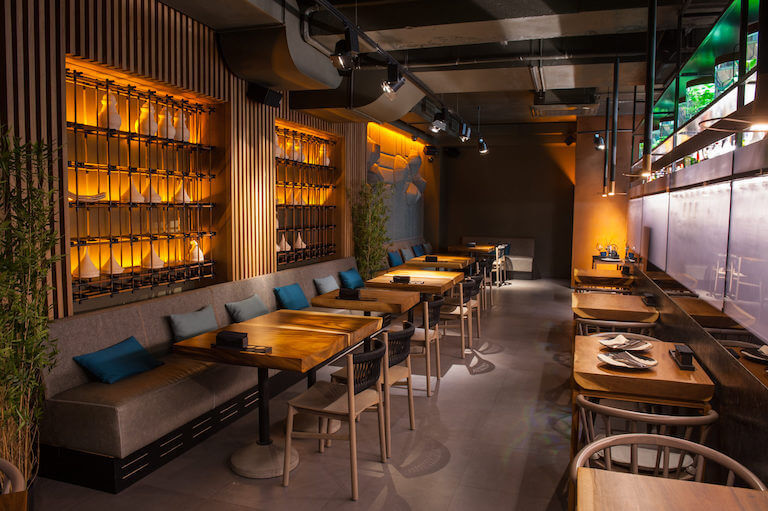Fine Dining Experience Islamabad: Delight In Lavish Cooking Joys
Fine Dining Experience Islamabad: Delight In Lavish Cooking Joys
Blog Article
Savor Authentic Oriental Cuisine With a Pan-Asian Twist for a Culinary Journey
Getting started on a cooking trip via authentic Asian food, enhanced with a Pan-Asian spin, uses an unique chance to check out the rich tapestry of tastes that specify the area's diverse culinary traditions. As you ponder these luring meals, consider the cultural narratives and historical influences that form them, each bite using a tale waiting to be found. Chinese food Islamabad.

Discovering Pan-Asian Flavors
In the world of global gastronomy, Pan-Asian food attracts attention for its exceptional diversity and the unified interaction of tastes from various Eastern cultures. This culinary technique commemorates the one-of-a-kind ingredients and abundant traditions found across the continent, developing a tapestry of tastes that is both satisfying and interesting. Key to Pan-Asian cuisine is its capability to balance contrasting flavors-- pleasant, salty, spicy, and sour-- while highlighting the quality and quality of each active ingredient.
From the umami-rich soy sauce of Japan to the fiery chili peppers of Thailand, Pan-Asian food provides a comprehensive combination of flavors. These elements are often incorporated in inventive methods, improving dishes with layers of complexity. As an example, making use of aromatic herbs such as lemongrass and cilantro, common in Vietnamese and Thai cuisine, adds a refreshing illumination to meals, while the unification of coconut milk delivers a creamy, rich structure.
The focus on fresh fruit and vegetables and fragrant spices makes certain that each dish is not just a banquet for the taste buds but also for the senses. Pan-Asian cuisine welcomes diners to start a culinary journey, discovering the vast and varied landscapes of Asian gastronomy with every bite.
Fusion Dishes to Attempt
While Pan-Asian cuisine is commemorated for its conventional flavors, the modern-day cooking landscape is increasingly embracing fusion dishes that mix these classic elements with influences from various other regions. This ingenious method not just honors the rich heritage of Eastern cooking arts however also presents unique taste experiences that attract contemporary tastes buds.
An archetype of such a blend meal is the Korean-Mexican taco, where seasoned bulgogi beef is wrapped in a warm tortilla, covered with kimchi and a zesty gochujang-infused salsa. This combination weds the strong, mouthwatering flavors of Korea with the lively, fresh components of Mexican cuisine. In a similar way, sushi burritos have obtained popularity, integrating the fragile creativity of Japanese sushi with the passionate, hand-held convenience of a burrito, usually featuring blend ingredients like tempura shrimp and avocado with a drizzle of wasabi mayo.
One more notable recipe is Thai curry ramen, which instills the luscious, fragrant spices of Thai curry into the comforting broth of typical Japanese ramen, creating a harmonious blend that entices the detects. These fusion meals prolong past mere novelty; they represent a culinary discussion in between societies, urging expedition and innovation on the planet of Pan-Asian food.
Vital Active Ingredients and Flavors
To absolutely appreciate Pan-Asian cuisine, one need to understand the necessary active ingredients and flavors that create its structure. This diverse cooking style draws from an abundant tapestry of Oriental practices, employing a harmonious mix of tastes and textures.
Aromatic elements are pivotal, with lemongrass, ginger, and garlic being common across numerous Pan-Asian dishes. These components provide a great smelling base that improves the complexity of flavors. Flavors such as star anise, cardamom, and cinnamon present warmth and character, resembling influences from areas like China and India.

Cooking Methods and Tips
Understanding the art of Pan-Asian food needs familiarity with its distinctive food preparation techniques, each adding to the lively tapestry of tastes this culinary tradition is celebrated for. Central to these approaches is the stir-fry, a rapid cooking method that protects the dietary integrity and vibrant shades of active ingredients. Utilizing a wok, the stir-fry approach enables even heat circulation, important for attaining the characteristic appearance and taste equilibrium of Pan-Asian meals.
One more essential technique is steaming, particularly prevalent in Chinese cuisine. This gentle method maintains the natural tastes and nutrients of active ingredients, making it ideal for seafood and veggies. Dumplings, a cherished staple, usually gain from steaming, causing soft, delicious appearances.
Barbecuing, likewise important, gives smoky depths to recipes such as Oriental bulgogi or Japanese yakitori (asian fusion restaurant). This strategy usually includes marinading ingredients, allowing flavors to pass through deeply papa's pizzeria prior to cooking over an open fire or warmer
Finally, understanding the art of stabilizing flavors-- sweet, sour, salted, bitter, and umami-- is vital. Correctly layering these elements can raise a meal from common to extraordinary, supplying a complicated and satisfying culinary experience that personifies the essence of hokkaido sushi Pan-Asian food.
Dining Experiences Worldwide
Around the world, Pan-Asian cuisine provides an unmatched eating experience, commemorated for its rich tapestry of tastes and vibrant discussions. This cooking sensation has gone beyond social borders, catching the hearts and palates of food lovers worldwide. In cosmopolitan cities fresh York, London, and Sydney, Pan-Asian restaurants serve as melting pots where culinary practices from Thailand, Japan, China, and past assemble, supplying diners with a diverse mix of recipes that highlight the region's diversity.
The worldwide allure of Pan-Asian food depends on its capacity to use both authenticity and development. Cooks masterfully wed standard components such as lemongrass, soy sauce, and miso with modern techniques, leading to recipes that are both refreshingly new and familiar. This fusion enables diners to start a culinary journey that values heritage while accepting modernity.
Additionally, dining experiences are raised with attentively designed environments that show the principles of Pan-Asian aesthetic appeals. From minimalist Japanese-inspired insides to vibrant Thai-themed rooms, each restaurant provides a distinct ambiance that complements the culinary offerings. Because of this, patrons are not just eating a dish however partaking in a social experience, making Pan-Asian dining a genuinely worldwide sensation.
Conclusion
The exploration of Pan-Asian food uses a profound understanding of the detailed interaction of flavors this article and cooking practices across Asia. By embracing fusion recipes such as Thai curry ramen and sushi burritos, the cooking journey not only highlights the adaptability of standard ingredients yet also showcases cutting-edge contemporary techniques. This gastronomic journey, enhanced by crucial seasonings and cooking techniques, supplies a distinct possibility to appreciate the social variety and cooking creativity that specify Pan-Asian cuisine on an international range.
Beginning on a culinary trip through genuine Eastern food, enhanced with a Pan-Asian spin, offers a special opportunity to discover the abundant tapestry of flavors that specify the area's varied culinary customs.In the world of worldwide gastronomy, Pan-Asian food stands out for its impressive diversity and the unified interaction of flavors from various Asian societies. Trick to Pan-Asian cuisine is its capability to balance different tastes-- wonderful, salted, spicy, and sour-- while highlighting the quality and quality of each active ingredient.

Report this page